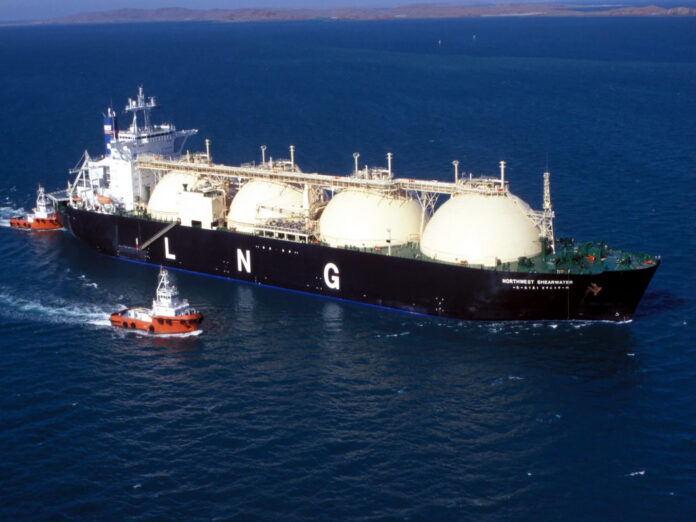The drama that started at the Oil and Gas Regulatory Authority (Ogra) in August 2020 is still not over. In fact, it may just be heating up.
Let us rewind to four months prior. In the first week of every month, Ogra sets the regasified liquefied natural gas (RLNG) prices for the month, or the losses to be charged by the gas companies to consumers.
This did not happen in first August, or indeed, in any week after, all the way until the week of November 12. What happened?
Two detailed Dawn reports, one from August and the other from November, help piece together the problem. Essentially, two different lobby groups were advocating very different prices for RLNG.
One set of officials in Ogra advocated for allowing the cost benefit of about 11% RLNG loss to Sui Northern Gas Pipelines Ltd (SNGPL) and 8.73% to Sui Southern Gas Company Ltd (SSGCL). This group was led by Noor-ul Haque, a professional accountant who had joined Ogra in 2003, and had been serving as Member Finance since 2015.
The second group of officials at Ogra thought this was ridiculous. Instead, they thought that UFG loss for fiscal year 2020-21 for SSGCL should be taken as 6.42pc (including 0.12pc of transmission loss), while UFG for SNGPL should be taken at 6.68pc (including 0.38pc transmission loss) on a provisional basis. This section was led by Muhammad Arif, Member Gas at Ogra since November 2019.
Their argument was this: that RLNG supplies are primarily on main lines where actual losses are negligible. Furthermore, proposed losses for RLNG were higher than those for local gas allowed in gas tarif, even on distribution lines where actual losses are significantly higher than transmission or main lines.
It is this latter group that won out, after nearly four months of hand wringing. On November 12, Ogra announced that it had reduced the cost of losses in the pricing of RLNG to about 6.3%, through a majority decision. In effect, the UFG loss allowance in tariff for SNGPL was reduced by about 5%, while that of SSGCL was reduced by 10%.
Was SSGCL going to take this lying down? Of course not. That is why just four days later, on November 16, it issued a strongly worded statement on the matter to the Pakistan Stock Exchange. It laid out a few interesting points.
In its statement, it said that it had followed the pricing mechanism set about by the Economic Coordination Committee (ECC) in its decision way back in June 2016. Under that decision, the ECC allowed UFG losses to be determined and charged at actual to RLNG consumers.
“The pricing model adopted by the ECC was based on the principal that the companies should not be exposed to, or be worse off due to any adverse impact of RLNG handling,” SSGCL emphasized.
Because of this decision, during fiscal year 2015 and fiscal year 2017, Ogra implemented the ECC guidelines ‘in true letter and spirit’, and allowed UFG at actual. Things continued in this manner right up until August 2020, when the pricing was suspended, and technically November 2020, when the new notification made the previous practise void.
This was not something that SSGCL had anticipated. Neither did it think Ogra can get away with this.
“We believed that OGRA is in contravention with Petroleum Levy Ordinance 1961 and against the Cabinet decision of Allowance of actual UFG for RLNG pricing by imposing unilateral decision of 6.3% benchmark in isolation for distribution consumers only,” it claimed.
SSGCL took it one step further, saying that Ogra could not go against a Supreme Court decision, which held that federal government policy rules are binding on Ogra: “The language of Section 21 of the ordinance is very clear in that the FG can issue guidelines and there is no check on the power of the FG to that effect. It is also absolutely clear that Ogra in terms of such guidelines has to perform its functions, however the only condition is that the guidelines should not be inconsistent with the provision of Ogra.”
Why is the above relevant? Because for now, natural gas consumers have a benchmark of nearly 7% for both the transmission and distribution consumers, while there is no separate benchmark for transmission and distribution consumers.
But now, Ogra has assumed separate benchmark of 0.12% for transmission and 6.3% for distribution. And it is on the basis of this technicality, that SSGCL is fighting back.
“Ogra therefore has effectively implemented UFG benchmark on RLNG in contravention of ECC / Cabinets decision, as against the legal position that under the Petroleum Levy Ordinance the mandate to determine allowable UFG in case of RLNG does not rest with Ogra.” the company said.























